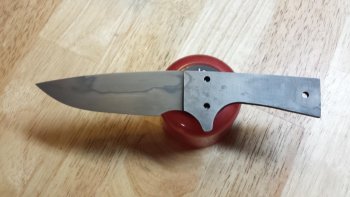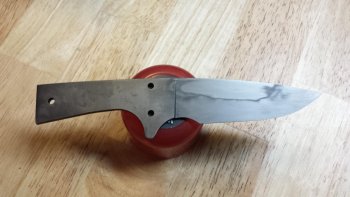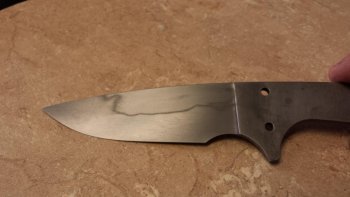Shane Wink
Well-Known Member
I decided to try some fireplace cement on some 1095 to see if I could produce a hamon with it. The tube was less than 4 bucks but rated at 2000*. I could see the hardening line at 400 and hand sanded to 1200 etching in a ferric chloride solution several times and on the last etch removed the oxides with 0000 steel wool and soap. I will grab some metal polish in the morning but here is where its at now.
on the next one I need to make it more of a point on the tip end when laying out he cement but I am happy with it so far.
I am open to suggestions on popping it out more and any other points, just incase someone does not know this is a stub tang blade. The rest will be added later.


on the next one I need to make it more of a point on the tip end when laying out he cement but I am happy with it so far.
I am open to suggestions on popping it out more and any other points, just incase someone does not know this is a stub tang blade. The rest will be added later.







